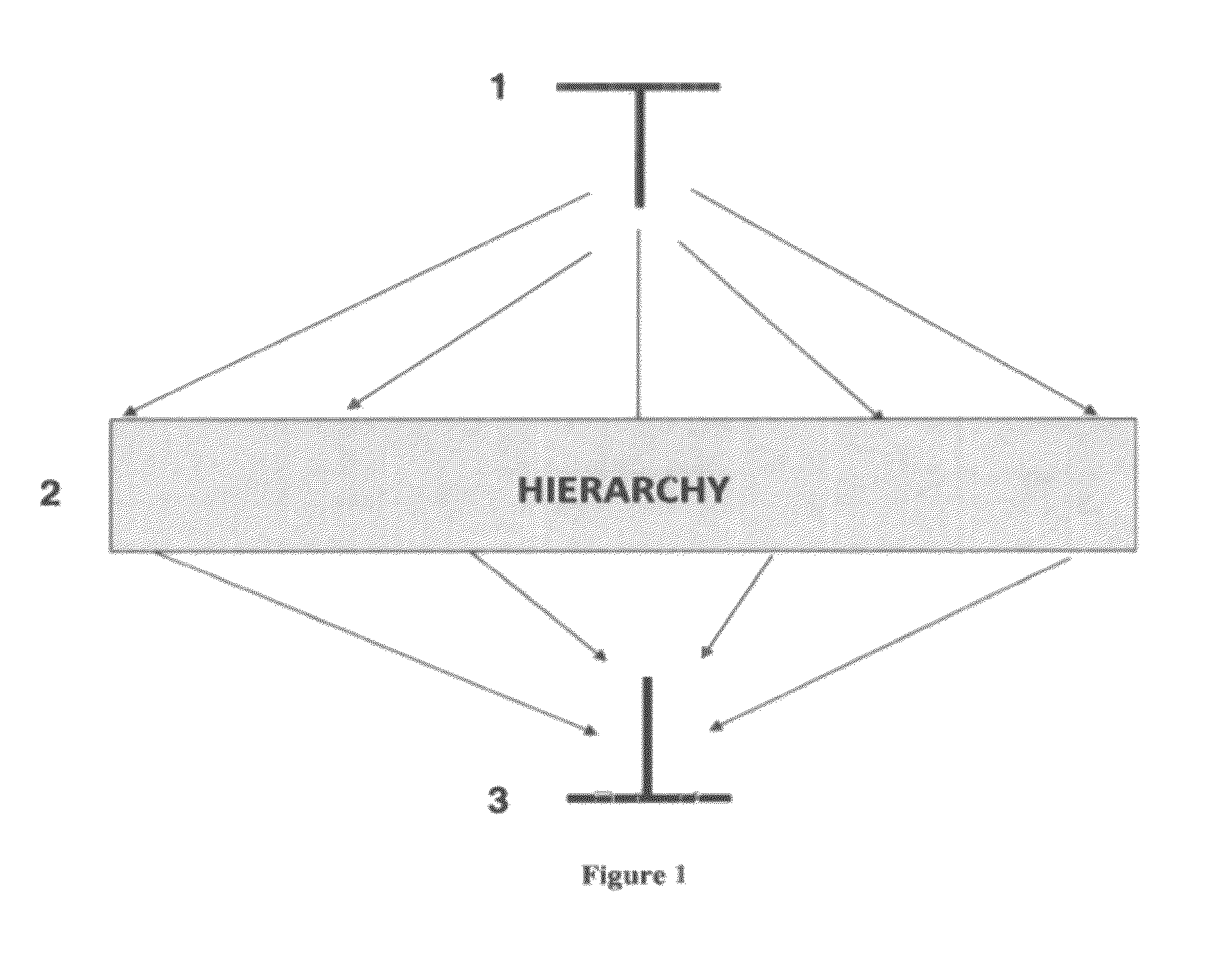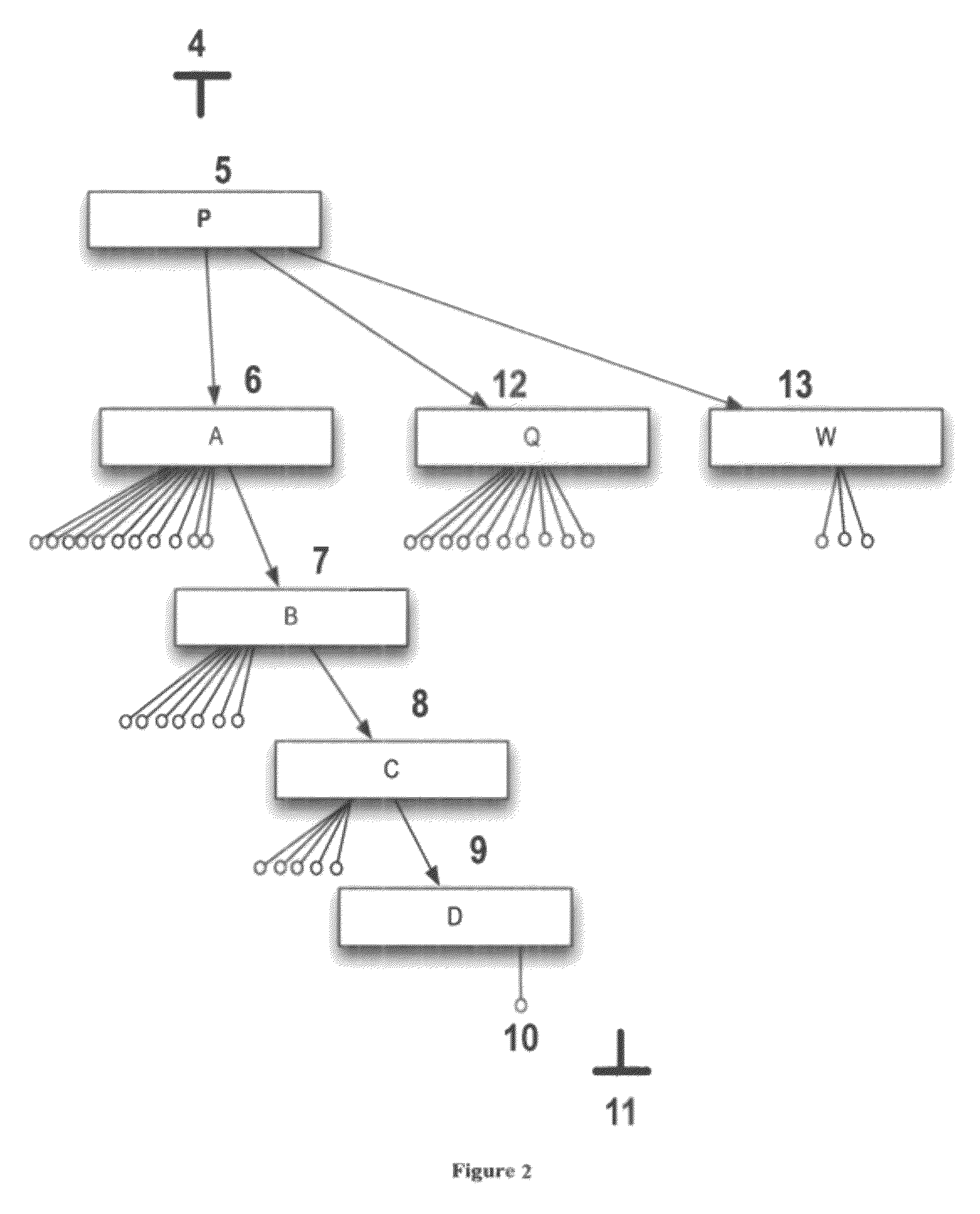Relativistic concept measuring system for data clustering
a data clustering and relativistic concept technology, applied in the field of relativistic concept measuring system for data clustering, can solve the problems of difficult to identify ontologies from raw data, difficult to cluster or reason with data,
- Summary
- Abstract
- Description
- Claims
- Application Information
AI Technical Summary
Benefits of technology
Problems solved by technology
Method used
Image
Examples
case 1
oncepts or expressions are equal when; all defining semantics and content are equivalent. For example, Vehicle Broken is equivalent to Engine Broken:
Vehicle Broken
[0161]HasLocation Engine
[0162]HasSite Spark-Plug
And
Engine Broken
[0163]HasLocation Engine
[0164]HasSite Spark-Plug
case 2
o concepts, i and j, differ in their definitions by some features or attributes and the Z-Equation defines their similarity:
[0165]Z(i,j)=1-∑i,j=1Nai,j(1-(Ncsi,jc(m)+1)Nc+1)+∑i=1Nbi,j(1-(Ncsi,j(m)+1)Nc+1)-∑i=1Ndi,j(1-(Ncsi,jc(nm)+1)Nc+1)
The Feature Measure (Fm) between given concepts, C1 and C2 with their AVPs, is defined using the Z-Equation as:
Fm(C1,C2)=1 / Z
When the components of the Z-Equation (e.g. Nc=0) are zero, then the value of Fm is 1, meaning that the concept itself is its own feature.
Where:
Ncsi,jc(m)=The number of concepts that have matching AVPs with concepts i and j (e.g. HasLocation Engine is a feature that matches two concepts Vehicle Broken and Engine Broken)
Nc=The total number of defined concepts
Ncsi,j(m)=The number of concepts that have AVPs with matching relations but different values to concepts i and j (e.g. HasLocation Engine with HasLocation Car).
Ncsi,jc(nm)=The number of AVPs that did not match between the two concepts i and j.
[0166]For example, Ta...
PUM
 Login to View More
Login to View More Abstract
Description
Claims
Application Information
 Login to View More
Login to View More - R&D
- Intellectual Property
- Life Sciences
- Materials
- Tech Scout
- Unparalleled Data Quality
- Higher Quality Content
- 60% Fewer Hallucinations
Browse by: Latest US Patents, China's latest patents, Technical Efficacy Thesaurus, Application Domain, Technology Topic, Popular Technical Reports.
© 2025 PatSnap. All rights reserved.Legal|Privacy policy|Modern Slavery Act Transparency Statement|Sitemap|About US| Contact US: help@patsnap.com



